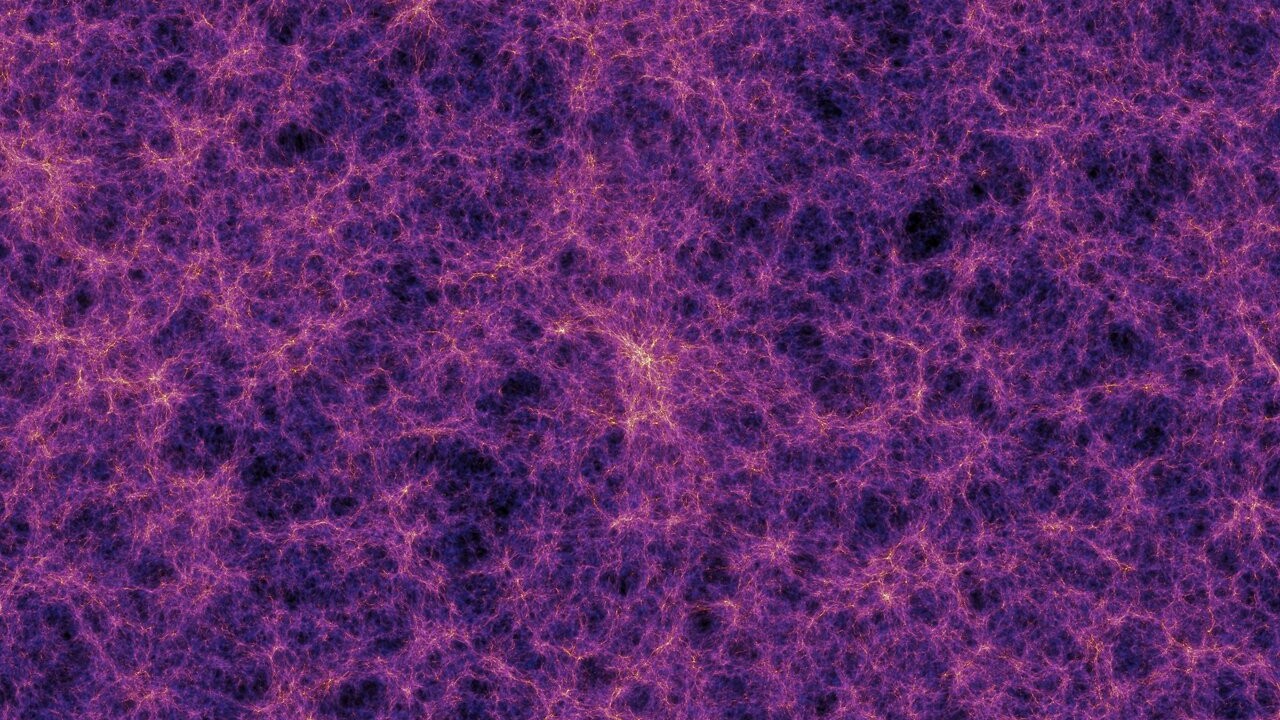New map of the universe's matter reveals a possible hole in our understanding of the cosmos
The cosmic web is a gigantic network of crisscrossing celestial superhighways that connects nearly everything in the universe.

Scientists have made one of the most precise maps of the universe's matter, and it shows that something may be missing in our best model of the cosmos.
Created by pooling data from two telescopes that observe different types of light, the new map revealed that the universe is less "clumpy" than previous models predicted — a potential sign that the vast cosmic web that connects galaxies is less understood than scientists thought.
According to our current understanding, the cosmic web is a gigantic network of crisscrossing celestial superhighways paved with hydrogen gas and dark matter. Taking shape in the chaotic aftermath of the Big Bang, the web's tendrils formed as clumps from the roiling broth of the young universe; where multiple strands of the web intersected, galaxies eventually formed. But the new map, published Jan. 31 as three separate studies in the journal Physical Review D, shows that in many parts of the universe, matter is less clumped together and more evenly spread out than theory predicts it should be.
Related: How dark is the cosmic web?
"It seems like there are slightly less fluctuations in the current universe than we would predict assuming our standard cosmological model anchored to the early universe," co-author Eric Baxter, an astrophysicist at the University of Hawaii, said in a statement.
Spinning the cosmic web
According to the standard model of cosmology, the universe began taking shape after the Big Bang, when the young cosmos swarmed with particles of both matter and antimatter, which popped into existence only to annihilate each other upon contact. Most of the universe's building blocks wiped themselves out this way, but the rapidly expanding fabric of space-time, along with some quantum fluctuations, meant that some pockets of the primordial plasma survived here and there.
The force of gravity soon compressed these plasma pockets in on themselves, heating the matter as it was squeezed closer together to such an extent that sound waves traveling at half the speed of light (called baryon acoustic oscillations) rippled outward from the plasma clumps. These ripples pushed away the matter that hadn't already been drawn into the center of a clump, where it came to rest as a halo around it. At that point, most of the universe's matter was distributed as a series of thin films surrounding countless cosmic voids, like a nest of soap bubbles in a sink.
Sign up for the Live Science daily newsletter now
Get the world’s most fascinating discoveries delivered straight to your inbox.
Once this matter, primarily hydrogen and helium, had sufficiently cooled, it clotted further to birth the first stars, which, in turn, forged heavier and heavier elements through nuclear fusion.
To map out how the cosmic web was spun, the researchers combined observations taken with the Dark Energy Survey in Chile — which scanned the sky in the near-ultraviolet, visible and near-infrared frequencies from 2013 to 2019 — and the South Pole Telescope, which is located in Antarctica and studies the microwave emissions that make up the cosmic microwave background — the oldest light in the universe.
Though they look at different wavelengths of light, both telescopes use a technique called gravitational lensing to map the clumping of matter. Gravitational lensing occurs when a massive object sits between our telescopes and its source; the more that light coming from a given pocket of space appears warped, the more matter there is in that space. This makes gravitational lensing an excellent tool for tracking both normal matter and its mysterious cousin dark matter, which, despite making up 85% of the universe, doesn't interact with light except by distorting it with gravity.
With this approach, the researchers used data from both telescopes to pinpoint the location of matter and weed out errors from one telescope's data set by comparing it to the other's.
"It functions like a cross-check, so it becomes a much more robust measurement than if you just used one or the other," co-lead author Chihway Chang, an astrophysicist at the University of Chicago, said in the statement.
The cosmic matter map the researchers produced closely fitted our understanding of how the universe evolved, except for a key discrepancy: It was more evenly distributed and less clumped than the standard model of cosmology would suggest.
Two possibilities exist to explain this discrepancy. The first is that we're simply looking at the universe too imprecisely, and that the apparent deviation from the model will disappear as we get better tools to peer at the cosmos with. The second, and more significant, possibility is that our cosmological model is missing some seriously big physics. Finding out which one is true will take more cross-surveys and mappings, as well as a deeper understanding of the cosmological constraints that bind the universe's soap suds.
"There is no known physical explanation for this discrepancy," the researchers wrote in one of the studies. "Cross-correlations between surveys … will enable significantly more powerful cross-correlation studies that will deliver some of the most precise and accurate cosmological constraints, and that will allow us to continue stress-testing the [standard cosmological] model."

Ben Turner is a U.K. based staff writer at Live Science. He covers physics and astronomy, among other topics like tech and climate change. He graduated from University College London with a degree in particle physics before training as a journalist. When he's not writing, Ben enjoys reading literature, playing the guitar and embarrassing himself with chess.










